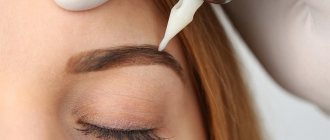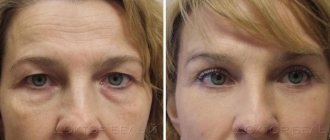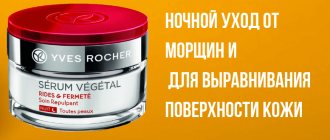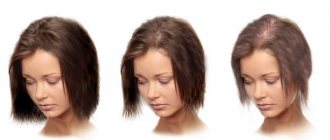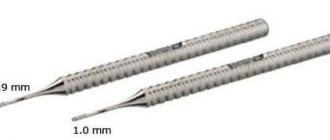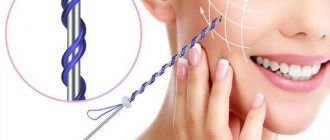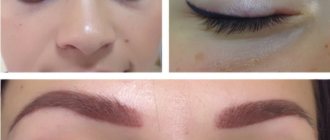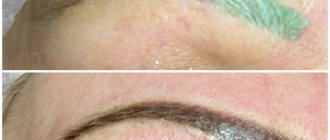Eyebrows are a natural decoration of the face, a finishing touch to character description. The arch of the eyebrows can suggest a person's psychotype. Or this is a spoiled beauty with capriciously curved arches, or maybe a sultry handsome man - a macho man with thick eyebrows that grow on the bridge of his nose.
Eyebrow transplant
Many people of both sexes are dissatisfied with the shape, thickness, and color of their eyebrows. But in some cases, changing them is simply necessary - for cosmetic reasons.
Cosmetology and aesthetic surgery are constantly evolving. New methods and methods have been developed - with their help you can make changes to your appearance, adjust the shape of your eyebrows and achieve the desired look.
What eyebrow modification techniques are used?
Cosmetology offers several ways to make eyebrows expressive and bring them into an attractive state. This can be achieved through makeup, tattooing, as well as microblading, powder spraying or eyebrow hair transplantation.
- Everyday makeup or tinting in a salon is the most common eyebrow care with an additional procedure for plucking out excess hairs to give the desired shape. This is a quick technique, but short in duration, requiring constant repetition and patience. If you pluck hairs frequently and for a long time, there is a danger of being left with virtually no eyebrows.
The easiest way is to tint your eyebrows daily. - Spraying with powder lasts longer using the shading method, when the pigment is applied under the skin using a very thin needle. At the same time, they experiment with color and shape. First, check for an allergic skin reaction to the dye. It must be of proven quality.
- A long-lasting result is obtained by applying a design with a mechanism specially created for tattoos. The dye is driven into the skin with a very thin needle to a depth of about two centimeters. There is a choice of continuous application with a pattern or with the image of hairs. The negative aspects of such an operation include the fact that if you don’t like the effect, it will not be easy to correct it later, and it is also possible to damage the natural eyebrow follicles.
- Drawing eyebrow hairs using microblading, in which pigment is introduced under the skin using a special blade. Such an intervention requires long healing, which may leave microscars and rough skin from scars, which looks unaesthetic. The effect lasts up to two years.
Eyebrow microblading is often performed - Hair transplantation from a donor site to an eyebrow is the most progressive and successful method in which eyebrows look natural. This method, after the skin has healed, will give your eyebrows a natural look for many years.
Historical reference
Back in the 40s of the last century, Japan began to develop a method of hair extensions with skin flaps in order to replenish previously lost hair on the head due to burns and wounds. The method is not widely used.
In the middle of the last century, American scientists revived and improved the practical experience of Japanese doctors. The developed concept of hair transplantation was based on the transplantation of individual grafts, which were cut into pieces from a strip of donor skin.
New progressive methods of treating alopecia were invented and introduced, giving amazing results in hair transplantation not only on the head, but also for hair extensions on the eyebrows, mustache and beard. They have spread all over the world.
Important ! In Russia, the method was first used in 1986.
Nowadays hair is transplanted not only to the head, but also to the area of the mustache, beard and eyebrows
Reasons for the popularity of the procedure
“Eyebrows have been transplanted since the advent of transplantation. The procedure became the most popular in the 2000s - then it was relevant exclusively for patients who had suffered various types of injuries,” says Artur Albertovich Alexandrov, plastic surgeon at the international clinic of aesthetic innovations “Mediaesthetic”, trichologist-transplantologist, author of an exclusive method of treatment and restoration and strengthening hair. — As is known, there are no follicles on the scars left after injuries, so hair does not grow there. But today transplantation is also performed for aesthetic reasons. Interest in the operation especially increased when wide, thick eyebrows became fashionable.”
View on Instagram
Who is suitable for eyebrow hair transplant?
For various reasons, people of both genders need eyebrow transformations. According to an analysis by the International Society of Hair Transplantation, women are 5 times more likely to seek eyebrow hair transplants than men. Main reasons:
- Dissatisfaction with the shape or sparse naturally thin eyebrows.
- Ugly scars and scars from accidents that spoil the appearance.
- Partial or complete burning during burns.
- Eyebrows are located asymmetrically and disrupt the overall harmony of the face.
- Alopecia after chemotherapy for cancer.
- Hair loss due to hormonal imbalance in the thyroid gland.
- Damage to hair follicles after tattooing.
There are several reasons why an eyebrow transplant may be required
Eyebrow transplant: what is it?
Not everyone has naturally beautiful eyebrow shape or thickness. But with the help of transplantation this can be corrected. A plastic surgeon is able to adjust the shape, width, and length of the eyebrows.
Once upon a time, people most often decided to undergo surgery after losing vegetation in this area. But in the modern world, people who want to change the shape or add thickness to their eyebrows often undergo this surgical intervention.
During the operation, the surgeon transfers hairs from the donor area to the correction area.
Who is contraindicated for eyebrow hair transplantation?
Before eyebrow hair transplantation, the patient must undergo a medical preoperative examination and pass the necessary blood tests. You also need to consult an endocrinologist, therapist, or skin disease doctor. Transplantation is not recommended for the following diseases:
- Diabetes mellitus and other diseases of the endocrine system.
- Unsatisfactory blood test results, poor clotting, low hemoglobin.
- Allergic reaction to antibiotics or anesthesia drugs.
- Irritation, sores, lichen or other skin diseases in the eyebrow area.
- Rare mental or nervous disorders such as trichotillomania (involuntary hair pulling).
There are contraindications to this procedure
Indications
INDICATIONS
- the presence of scars due to which there are no hairs in the eyebrow area;
- complete or partial loss of vegetation due to pathologies, chemical procedures;
- impaired hair growth, which often occurs after intensive plucking;
- aesthetic considerations, when a person does not like the shape or thickness of the eyebrows.
Fashion concerns not only clothes and shoes, it even affects eyebrows. It was once fashionable to pluck large amounts of hair. As a result, the eyebrows resembled strings.
This could disrupt hair growth in this area. Now a person cannot grow thick eyebrows, which are now fashionable. For this reason, women often decide to undergo transplantation.
Not only women undergo eyebrow transplantation. But, as practice shows, men turn to a surgeon for such an operation 5 times less often.
Plastic surgeon Azita Majidi
How to choose a cosmetology clinic for hair transplantation?
A transplant operation is a serious step with results that last for many years, so it is better to choose a clinic in advance and pay attention to the following information:
- About the duration of the center’s operation to provide medical services for hair transplantation and the availability of a license for this type of activity.
- What transplantation methods are used in this clinic?
Find information about the name of a trichologist surgeon who performs eyebrow hair transplant operations. Learn about experience and his professional skills.
The site examines reviews and photos of patients who have previously visited the clinic, their opinions about the surgeon and the results of his work. Negative records give cause for reflection; it is recommended to look for another clinic.
It is important to approach the choice of clinic responsibly
It is important to study the price list, which should be posted on the website, in the clinic itself. Too low prices are alarming and raise doubts about the professionalism and quality of the operations offered.
Important ! The clinic and the doctor must enter into an agreement with the client and specify all the conditions in it, and give a written guarantee about the quality of the operation performed.
Eyebrow transplantation: features of the operation
Previously, the only salvation from eyebrow alopecia was cosmetics and tattooing. In the first case, the shape of the vegetation has to be adjusted daily, or even several times during the day; in the second, you have to visit a tattoo artist once every 1-3 years, depending on the quality of the materials used during tattooing. Neither method can be called durable or most effective. In addition, the eyebrows look unnatural in both cases - if you look closely, you can see paint and cosmetic pencil.
Fortunately, now there is an opportunity to fix the eyebrow situation forever. It is enough to transplant them.
Eyebrow transplantation or eyebrow transplantation is an adapted hair transplantation procedure for hair loss. Hair follicles from another part of the body are implanted into the skin in the brow area. The eyebrows will remain thick until the end of the life of the person who decides to undergo the transplant. From the moment of transplantation, you only need to wait until the follicles take root - usually a period of several months.
Eyebrow correction procedure
The transplant uses the hair of the same person who needs this operation. They are taken from the area behind the ears or from the back of the head. Hairy areas of the epidermis on the legs or arms and neck are also suitable.
Thin and soft hairs are suitable for the procedure. For one eyebrow you will need 50-300 units - this amount will be agreed upon in a preliminary consultation with a specialist. During the operation, specialists ensure that future eyebrows have a beautiful shape, the necessary and suitable width and density.
To correct the shape of the eyebrows and their thickness, usually just one procedure is enough. But after it, you need to visit a doctor about six months later: a specialist will look at the result and, if necessary, can prescribe a correction - adding hairs to those places where they have not taken root for some reason.
On a note! Sometimes a transplant requires adjustment after some time. You need to be prepared for this.
The duration of the transplant operation is only a few hours (from 1 to 6). It is performed under local anesthesia. So the patient does not feel pain or any serious discomfort. But after the effect of the anesthetic wears off, discomfort and pain appear. These side effects usually go away within a few days.
How to prepare for surgery?
Make an appointment with a trichologist and provide him with the results of medical examinations. We discuss all the nuances of the operation:
- They briefly familiarize themselves with the proposed method of transplantation, explain to the patient the principle of the operation and its advantages.
- The doctor draws and clarifies with the patient the shape and line of the eyebrows, their length and width.
- Coordinates from which places and in what quantity donor material will be extracted.
- The total cost of the operation, including anesthesia and medical care, is calculated.
- An agreement for the provision of medical services is concluded.
- The trichologist surgeon gives recommendations that the patient must follow 10 days before the operation: do not drink alcohol, limit smoking, stop taking medications.
It is important to prepare for the procedure
How many grafts are transplanted?
The amount of material needed depends on the scale of the surgical procedure. To correct the entire eyebrow area, an average of 350 grafts are used. The minimum quantity for correcting the shape and density is 50 - 100 pieces.
The procedure takes place within 2 - 3 hours. If desired, the transplant can be repeated 4 to 6 months after complete recovery. However, already at the first consultation the required number of grafts to obtain the desired result is established.
What is the operation process like?
- The surgeon examines the condition of the eyebrows and takes the necessary measurements. Draws both eyebrows, even if surgery is necessary on one of them. This ensures the achievement of strict symmetry of the eyebrows.
- Determines the area for collecting donor material. Usually the back of the head is selected, follicles are removed behind the ears, on the arms, and neck.
- The operation is performed under local anesthesia, along the intended contour of the eyebrow and the donor site is treated with an anesthetic.
The operation is performed under local anesthesia - Grafts with hair follicles are transplanted from one place to another using a special instrument. At the same time, the angle of inclination and direction of hair growth are maintained.
Pros and cons of the operation
The following advantages of eyebrow transplantation can be highlighted:
- the operation will help even in case of complete loss of eyebrows;
- This method improves the appearance;
- there is no need to go for correction after some time, as in the case of permanent makeup;
- Many women stop tinting their eyebrows, which saves time.
But there are also some disadvantages of the technique:
- You will have to face painful sensations. The operation itself is performed under local anesthesia. But when it stops working, pain appears.
- Contraindications should be taken into account, and there are many of them.
- In some situations complications arise.
- This is not a cheap procedure.
- To see the final result, you must be patient. The fact is that a long recovery must take place, after which the eyebrows will acquire a pleasant appearance.
- The transplant area must be cared for after surgery.
Subtleties of the operation
The surgeon must have professional skills, a good knowledge of the anatomy of the face and a creative approach to the operation, achieving aesthetic, brilliant results. Especially if the patients are women.
Key Features:
- Graft transplantation is performed using herringbone technology with a certain frequency.
- They begin to transplant follicles from the upper and lower edges, following the shape of the eyebrow arch to the middle.
- The hairs are selected quite thin, from the behind-the-ear or cervical area.
- When shaping the eyebrows, optimal thickness and width are achieved.
- To give the eyebrows the most natural look, the hair follicles are positioned evenly to form an angle of inclination and clear lines of the eyebrows.
This procedure has certain features
How to grow eyebrows so that they look harmonious on your face?
Everyone's facial features are different, and you don't just need to transplant hair for many years. It is important to choose the shape of the arches, the thickness and length of the eyebrows so as to veil imperfections and emphasize the individual features of the appearance.
Face shapes
Suitable eyebrow shapes for different face shapes:
- If the face is oval, make the eyebrows straight, with a soft curve. The ends of the arcs must be at the same level. The eyebrows themselves are slightly raised in the middle.
- For a round face, eyebrows that are wider at the beginning and sharper at the end are suitable, with more
- high bend.
- If the face is rectangular, elongated eyebrows are formed, not very wide with a smooth, barely noticeable bend.
- If the face is square, for the purpose of lengthening, choose a slightly thickened eyebrow shape with a slightly raised arch.
- For the diamond-shaped type, it is desirable to smooth out the sharpness of the features - a wide eyebrow smoothly transitions from a wide beginning to a tip with a slight bend.
- For a triangular face, wide, long eyebrows are suitable, slightly raised at the end, with a smooth wavy curve.
You need to choose the shape of your eyebrows based on your face type and shape.
Three transplantation methods, their differences
Three main methods of follicle transplantation have been developed and are widely used. They follow the same principle: hairs are taken from the donor area and transplanted to problem areas. But different techniques are used to remove and introduce follicles, and different tools are also used.
FUT method
It is a follicular unit transplantation, or Strip - patch method. Widely used in the practice of transplanting hair grafts to the eyebrow area. This is one of the first methods developed in the last century.
FUT method
The procedure for performing the operation is as follows.
- The areas intended for surgical intervention are prepared and treated with anti-inflammatory substances.
- The surgery is performed under general anesthesia. The medical team may consist of more than five people: a surgeon, an anesthesiologist and nurses.
- A long narrow strip is cut out from the donor area with a scalpel - a flap - and broken into small pieces - grafts.
- The cut site is sutured, and when it heals, a scar or scar remains.
- Incisions are made on the eyebrows with a scalpel, one after another, and the grafts prepared for implantation are placed into them using special microsurgical tweezers.
Important ! This method does not allow making close incisions and ensuring the location of the follicles at the desired angle.
This method has disadvantages
The disadvantage is that the eyebrows will not look very natural, with noticeable scars on the face and in the donor area.
If the eyebrow is severely damaged and has a large scar after injury, transplantation is performed not with grafts, but with a flap. A patch with hair follicles is taken from the temple along with blood vessels and sewn onto the damaged eyebrow.
The operation is traumatic; not all implanted grafts take root. Some of them, up to 35%, can die and disrupt the thickness of the hair.
During surgery, nerve endings and blood vessels are damaged with a scalpel, which causes long-term headaches and swelling with bruises around the eyes.
Important ! Rehabilitation usually takes a long time - lasts two months or more.
The operation is highly traumatic
FUE method
Is a follicular unit extraction transplantation. This is a seamless operation using a machine method for extracting grafts. A progressive technology that does not require incisions with a scalpel and does not leave large scars on the skin. Only small, pinpoint traces of removal remain on the head.
This method of aesthetic surgery, which produces effective results, has attracted the attention of surgeons and patients around the world.
FUE method
An operation that requires specialists to have a high level of training, experience and skill. Patients tolerate the transplant well; it does not cause injury or lead to serious complications. Has high and long-term effectiveness.
During the operation, the team of doctors performs the following manipulations.
- At the donor site, regrown hair is trimmed. Both transplant sites are treated with an antiseptic. The operation is performed under local anesthesia, and the patient can observe the progress of the entire process.
- Using a hand tool - a punch - microscopic pieces are cut out - grafts with follicles. For eyebrow transplantation, grafts containing one or two fine hairs are selected.
- To ensure reliable implantation, the follicles are placed in a special solution.
- Punctures are made on the eyebrows, at the site of hair transplantation. Using an instrument along a drawn arc, each graft with follicles is implanted into the formed hole.
Important ! The duration of the operation is one or two hours, depending on the chosen volume of hair transplantation.
This operation lasts about 1-2 hours
Upon completion, the eyebrows are treated with disinfecting and antiseptic preparations. The patient is shown the preliminary result and bandaged.
The doctor gives recommendations for care and schedules a follow-up appointment in two days to remove the bandage.
HFE method
It is a follicular unit transplantation. This is a non-marking, seamless operation using manual graft extraction. The entire operation procedure is performed similarly to the FUE method. The difference is that when harvesting a graft, a micropunch is used, a tube with a diameter of 0.6–0.8 mm. It is not grafts that are implanted, but individual follicles, and this is done manually using a special tool - the Choi implanter. A scalpel is not used. Follicles are selected from the back of the head, but closer to the neck and ears, where the hair is softer and thinner, suitable for eyebrows. Using an implanter allows you to transplant hair follicles to a depth of up to two millimeters, without damaging blood vessels or touching nerve fibers.
HFE method
The result of the operation is characterized by the following advantages compared to other methods:
- There are no clearly visible marks at the site of follicle removal and on the eyebrows - only the puncture point, which disappears after a few days. There are no scars or stitches.
- The operation takes place without injury and does not cause headaches, hematomas or swelling. There is no numbness, the skin remains sensitive.
- During implantation, a high survival rate of transplanted follicles is achieved - it is about 98%. The total loss of donor material is no more than 2.5%.
- Eyebrows acquire a natural appearance, the natural direction and angle of hair growth are preserved. In this case, normal density, width and consistent shape of the arch are achieved.
- Depending on the volume and area of replacement, from 50 to 500 hairs are required, the total duration of the procedure is no more than three hours.
- Contraindications are minimal; preliminary diagnosis is required. The method does not require surgical intervention; the transplantation event takes place in an outpatient setting.
- Rehabilitation is minor; immediately after transplantation, patients can appreciate how new their eyebrows look. And they immediately return to the normal rhythm of life.
Important ! The only negative is that hair transplanted to eyebrows grows faster than natural hair, and it is constantly trimmed carefully.
There are no scars or stitches after this operation
Advantages
FUE hair transplant is the most effective transplant method. It has a number of undeniable advantages:
- low morbidity;
- no risk of complications;
- no scars or bruises remain;
- efficiency - as a result of one procedure, you can achieve a density of 80 hairs / 1 sq. cm;
- high survival rate;
- The transplanted hair remains for life.
What conditions are important to pay attention to?
Before the operation, together with a trichologist, examining the tests, it is advisable to establish and understand the cause of the absence or loss of hair in order to prevent the recurrence of this problem later.
Even before the start of the operation, during a consultation with a trichologist, the future shape of the patient’s eyebrows should be determined. It is necessary to choose the shape of the arches that suits the patient’s face type.
For implantation on eyebrows, donor follicles are selected more carefully. Hair should be thin, soft, without a tendency to grow long. They are selected from the back of the head, in the neck area and behind the ears. The hair at the back of the head is not suitable - it is thicker and difficult to create the desired eyebrow shape.
It is important to carefully select donor follicles
Important ! To give the arches a natural density and the correct angle of hair inclination, grafts containing one, maximum two follicles are selected. Follicles of 3-4 hairs each will look like a bunch, which is not typical for eyebrows.
After the operation, a positive result should be immediately visible: the eyebrows have clear, even edges, and the shape of the arch corresponds to the previously agreed upon outline.
The result after surgery is usually visible immediately, and after the swelling subsides, the effect will be more pronounced
Sequencing
It is necessary to contact a trichologist who is knowledgeable in this matter to determine the source of eyebrow loss (of course, if this is not the result of aggressive therapy). In case of similar problems of lack of hair, it is recommended to resort to the transplantation method.
The situation is similar in the case of hair loss. When the loss concerns only the eyebrow area, all issues with transplantation will be on the agenda - this is probably the only available option for restoring hair to avoid local baldness.
In the current situation, tattooing is far from the most acceptable option and, naturally, constant dyeing and “touching up” hair is a rather troublesome task that can only solve the problem temporarily.
Causes of loss
Many people ask the question of the reasons for the loss of eyebrows. The loss is to blame for serious illnesses, excessive stress, chemical poisoning, or after undergoing chemotherapy courses.
The procedure can take you by surprise in the postpartum period: due to the depletion of the body by pregnancy, resources are redistributed, which does not affect the woman’s appearance for the better.
It is not uncommon for hair loss in the eyebrow area to be associated with skin damage resulting from accidents, surgeries, unsuccessful body modifications (piercings, scarring, etc.). The suture or wound gradually heals, but the hair follicles themselves are already damaged and in most cases fatal, which affects the lack of growth.
We cannot exclude the reason for the absence due to the disease trichotillomania - a disease when a patient, due to nervousness, pulls out his own hair, including his eyebrows.
As a result of all situations leading to eyebrow loss, they become expressionless, weak, brittle, which leads to their loss. You will either have to put up with this or resort to a modern method of combating hair loss - a transplant.
Postoperative rehabilitation and eyebrow care
During the recovery period, you must strictly follow the surgeon's recommendations for eyebrow care. A positive transplant result depends not only on the professionalism of the specialist, but also on how carefully and patiently the patient cares for his eyebrows.
Let us list the basic rules of rehabilitation:
- The hematomas and swelling that appear on the forehead and under the eyes after the transplant will quickly disappear.
- There will be redness and itching for some time. You should not scratch the transplant site so as not to damage the skin or pull out hairs.
- It is contraindicated to touch or rip off crusts and detachments that have appeared with your hands - this can damage fragile hair follicles.
The crusts cannot be peeled off - At first, carefully wash your eyebrows with warm water without any additives 3-4 times a day.
- To heal and soften the crust, a special gel is used daily. It will soften the skin and give the hairs the correct direction of growth.
- Soft peeling will help get rid of peeling. To do this, you can use an old soft brush, which was previously used to tint eyelashes.
- In order to reduce sweat on the forehead until the wounds heal, it is necessary to suspend physical activity.
Don't exercise for a while - In the first seven days after surgery, you should limit your visits to baths, saunas, and swimming pools.
- If the implanted hair grows strongly and in a timely manner, you need to trim it with nail scissors.
Preparation and technique of the procedure
The most difficult stage in carrying out this procedure is to find a specialist, a transplantologist with impeccable artistic taste, because there is absolutely no point in transplanting eyebrows and constantly adjusting them.
After a simple transplant, eyebrows should look simply perfect. During a consultation with a specialist, you need to find out from which areas the so-called donor hair will be taken, as well as the number of hairs in each of the transplanted grafts. Faster and cheaper methods of transplantation will give you a very poor effect in aesthetic terms.
During a consultation with a doctor, you need him to draw you eyebrow lines that suit you. Discussion of so-called abstract wishes is quite small.
Execution technique
Eyebrows have the following characteristic distinctive features:
Both boundaries of hair growth are most clearly visible in the nearest distance, that is, the lower and upper boundaries of hair growth;- The hairs below and above converge in the middle;
- The hairs in the eyebrow area grow at a fairly large angle to the skin.
At the moment, FUE technology is considered the most ideal for rehabilitation and adjustment.
In order to get the best natural results from an eyebrow hair transplant, you need to choose hair that is good in terms of thickness. If hair from the body, from the back of the head, can be used to rehabilitate the hair on the head, however, for the eyebrows this form of hair will be very hard and thick.
Eyebrows will look most natural if hair from the neck or behind the ears is used.
And in order for the hair to be uniform in growth density, grafts are used for the transplantation itself, which contain one or two hair follicles.
The so-called criterion for the excellent work of a specialist is, so to speak, an aesthetic appearance almost immediately after the procedure, that is, the hair follicles must be located as evenly as possible, and give an external beautiful clear appearance of the lines.
If the skin is damaged and replaced with connective tissue, then patches are used instead of grafts. A patch is an area of skin from the temple area that has its own vein and artery. The patch's personal vessels nourish it while the tissue takes root.
How does the eyebrow transplant procedure work?
According to the standard, about three hundred and fifty single-hair grafts are sufficient for eyebrow rehabilitation, and from fifty to one hundred grafts will be sufficient for correction.
If three hundred and fifty follicles turns out to be too few for the client, then a repeat procedure is possible after a period of four to six months. Basically, the number of transplanted grafts and the number of necessary procedures are discussed at the initial consultation.
In most cases, absolutely all manipulations are performed under local anesthesia and take approximately three hours.
At the initial stage, the participants' skin and hair from the donor area are collected. Such resulting grafts can be treated with special compounds to increase survival rate.
At the second stage, some incisions or punctures are applied to the skin of the eyebrows, after which grafts are placed into these punctures. Notches are applied in order to give the hair follicles a particularly correct direction of growth and the required angle in relation to the skin.
Consequences and rehabilitation
Almost immediately after the procedure, redness or swelling may occur in the eyebrow area. The swelling and redness itself can last up to seven days. Over time, their severity decreases.
During the first thirty days, the transplanted follicles begin to take root, and growth is restored after thirty to sixty days.
During the postoperative period, you need to: avoid any influences that can increase swelling (thermal effects or working in an incline), come to a specialist in a timely manner for dressings.
When hair growth is restored, at first it will be necessary to guide its growth using an eyebrow comb or a special gel. If the follicles are from the back of the head, then the hair will need to be trimmed about once every seven days, use nail scissors for this.
Possible complications
Serious complications are rare. They may be caused by the following reasons:
- An infection introduced during surgery or due to careless eyebrow care causes prolonged irritation and redness of the eyebrow skin.
- Numbness of the skin and difficulty in facial movements may be a consequence of damage to nerve endings.
- Headaches caused by an operational error or individual intolerance to anesthetic injections.
Complications are rare, but if they occur, you should consult a doctor immediately
Important ! In case of any ailments or disorders, you must immediately contact the clinic where the operation was performed.
Contraindications
Despite the fact that eyebrow thread lifting is considered a safe, minimally invasive procedure, it still has contraindications:
- pregnancy, breastfeeding;
- chronic dermatological diseases in the acute stage;
- oncology;
- diseases of the hematopoietic system;
- the need for constant use of drugs that affect blood viscosity;
- hormonal, endocrine disorders;
- decompensated diabetes mellitus;
- autoimmune disorders;
- congenital or acquired immunodeficiency;
- cardiovascular pathologies;
- renal, liver, pulmonary failure;
- somatic and mental disorders;
- tendency to form keloid or hypertrophic scars;
- individual intolerance to the components of the material.
Help about the concepts and terms used in the article
- Alopecia (baldness, baldness) is a congenital or acquired damage caused by various circumstances; partial or complete absence of hair.
- A follicle is the same as a hair follicle, it is the root of the hair with the place from which it grows.
- Grafts are pieces of skin with a small group of follicles located in a very small, up to 1 mm, piece of skin. They are obtained by dividing a piece of leather.
- Choi implanter is an instrument with a thin needle at the very tip and hollow inside, used to create micro-incisions for introducing follicles into them.
- Punch is a manual punch used to cut grafts from donor skin.
Indications for transplantation and the psychological side of the issue
Transplantation can be indicated both for people who simply want to increase the volume of eyelashes and eyebrows, and for those who have lost them partially or completely. Hair loss is often caused by burns, scarring, and chemotherapy. Also among patients there are often people suffering from trichotillomania. However, in the latter case, surgery is possible only if there is written confirmation of stable remission. Otherwise, due to his bad habit, a person will simply gradually pull out the transplanted hair. This makes the operation simply pointless. Therefore, you may first need to work with a psychologist and other specialists.
With all this, the bulk of patients are simply people who are dissatisfied with the volume and thickness of their eyebrows and eyelashes. For them, this is a completely simple procedure that has no special contraindications and is quite affordable.
It must be remembered that modern man is exposed to a number of negative factors. Often of their own free will. This mainly concerns girls. Eyelash curling, questionable cosmetics and medications, tattooing, regular eyebrow hair removal - all this affects the volume, length, and thickness of the hair. As a result, self-doubt, isolation, complexes, etc. often develop. For many girls and women, transplantation becomes a real salvation and an opportunity to return to a normal lifestyle.
Photos before and after the procedure
Photos before and after eyebrow transplant No. 1
Photos before and after eyebrow transplant No. 2
Photos before and after eyebrow transplant No. 3
How much does an eyebrow transplant cost: price in Moscow, St. Petersburg
Today, a large number of clinics offer eyebrow transplants, but the price tags vary so much that even one’s eyes run wild. In general, it is not recommended to choose the first salon you come across, where the price of services is more or less low. Usually there is either no effect after such transplants or it is bad. When clients turn to unreliable salons, they often complain that half of their hair falls out, there is no effect, or other problems arise.
As a rule, the cost of the procedure in Moscow and St. Petersburg ranges from 1 euro per graft. But just keep in mind that eyebrows need to be adjusted periodically for them to last a long time. Usually after a few years the hairs fall out and the result is the same as before the procedure.
If you convert it into rubles, then usually the cost of the procedure ranges from 40-60 thousand rubles.
Cost of the procedure
The cost of an eyebrow transplant procedure can vary depending on which method is used. It is also influenced by the number of follicles transplanted and the pricing policy of the clinic. It should be noted that the low cost of the procedure often indicates that it is performed using low-quality equipment. The consequence of such an operation is often severe complications and unsatisfactory results.
Important ! Eyebrow transplantation is a rather complicated procedure, so it cannot be too costly. If you decide to undergo it, contact a clinic that has a sufficient number of positive reviews, and also consult a doctor first.
We will indicate the cost of different types of eyebrow transplant operations.
| Method | Approximate cost of the operation |
| FUT | 15000 – 32000 rub. |
| FUE | 15000 – 38000 rub. |
| HFE | 17500 – 40000 rub. |
Reviews
Irina, Kaluga
“Since childhood, my eyebrows have been very thin - it really spoiled my appearance. Of course, at first I constantly tinted them, but it was inconvenient. In addition, in the summer, the paint on the eyebrows could spread, you could touch them with your hand, and all the beauty would disappear. I decided to undergo a hair transplant procedure in the eyebrow area. At first I was very afraid, because the operation is quite serious, but after consulting with a doctor, my opinion changed. I walked with confidence.
The FUE procedure was performed. The result was noticeable immediately and I really liked it. Then the swelling and redness went down, the hematomas disappeared (they were small), and the final appearance appeared. I am very pleased and recommend it!”
There are many positive reviews about this procedure
Anna, Samara
“I always wanted to do something with my eyebrows. I didn’t want to walk around with “strings”, so I decided to have an eyebrow transplant. I chose a “newer” method - HFE. It is a little more expensive than others, but the effect is wonderful. I'm just happy that my eyebrows look normal now. True, you have to trim them (the hair grows faster and longer there), but these are minor things.”
Eyebrow transplant methods (3 options)
Eyebrow transplantation can be performed using different methods, each of which is described below.
Patchwork (strip method)
Nowadays, surgeons rarely use this technique. It's already outdated. At the beginning of the procedure, the doctor removes the defective area where hairs do not grow and transfers there another area of the skin taken from the area of active hair growth.
To fix the transferred skin, the doctor applies a cosmetic suture.
It is difficult to carry out such a procedure, and the effect is not always satisfactory. It takes 2-3 months for the area of skin that was transferred to take root.
Due to skin transfer, the nerve endings are damaged, so the transplanted area will not be sensitive.
After the patchwork method, scars remain.
Plastic surgeon Azita Majidi
Over time, the technique has improved. Doctors do not transfer the entire donor site, but break it into fragments. After this, they are installed in the required zones.
Despite the many shortcomings of the method, it continues to be used. For example, only this method can improve the appearance of eyebrows in the presence of a large number of rough scars.
Seamless transplantation (STI)
The procedure is not as traumatic as the previous method. The doctor removes hair grafts from the areas where hairs grow. After this, the doctor makes small incisions in the area of the eyebrow transplant. This is also where hair grafts are placed.
There is no need for stitches, so rehabilitation is faster and the results are better. The transplant area remains sensitive.
But the procedure itself takes a long time, requires careful and painstaking work by a doctor, so its price is higher.
HFE method
This is the most popular eyebrow transplant technique. After this procedure, patients rarely experience complications.
For transplantation, micro-instruments are used to remove hair follicles and transfer them to the desired area. In this method, there is no damage to the skin or nerve endings.
Eyebrow healing after the HFE method takes place in 2-3 days.
Plastic surgeon Jennifer Walden

